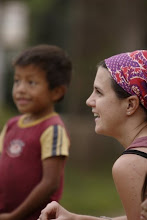As I have learned this summer, the rural sector presents a complex set of challenges for business. From management and organizational structure to marketing and operations, you have to do things differently. You cannot just rely on size and speed. There is nothing speedy about spending two hours on the back of a scooter, traveling less than 20 kilometers, just to get to the office. Especially in monsoon season. Check out the main road to town here:

You cannot just hire a bunch of a great people and throw them together on a project. Having spent 27 hours on a train, I now understand why company retreats do not occur here. And, as demonstrated by this picture of the electricity “infrastructure” at one of our kiosks, there is a total lack of basic resources:

So you have to be innovative and resourceful. You have to overcome geographical obstacles, limited resources, lack of human capital and lack of experience. And you have to be credible. In most villages, there is usually a history of exploitation that leads itself to mistrust of businesses.
That said, if you can do it, you can have a big impact, both in terms of profit and development. So, where do you start? You begin with the same premise that design theory, social work and business all share: know your customers or clients and meet them where they are at. If you do not understand the daily life of the rural Indian, you cannot sell to him, support him or empower him.
Drishtee understands this. Management consistently emphasizes that the magic happens in the field. At the top, we need to create a self-sustaining structure that, with the right mix of people, products and support, can run itself. The structure has to be sound enough to enable success for less-qualified (but hard-working) individuals while being flexible enough to allow the high-performers to soar. Sounds simple, right?
Of course, it is not. But we are trying, along with a few other intrepid organizations. In fact, India is ahead of the curve when it comes to rural marketing and business. There is an entire business school dedicated to this field. However, someone told me that the students cannot afford to work in rural areas after they graduate because of the debts they have to pay off! Add yet another obstacle to the list.












No comments:
Post a Comment